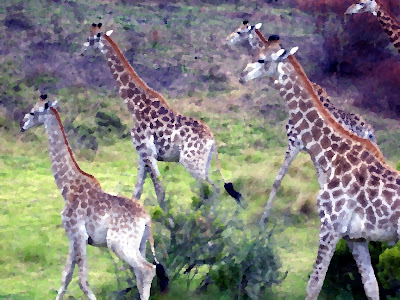Giraffe Design Shows Evolution to be Fundamentally Flawed
 |
| morgueFile/Irenegynnildponton (modified) |
Are you familiar with the expression, "A place for everything, and everything in its place"? Well, now you are. We have seen many times that so many creatures are very intricate. There are numerous features that must be in place and working together, or nothing works at all. One must be very uninformed or very credulous indeed to believe that such details could be the result of time, chance, and random mutations evolving piecemeal. Nothing would function, make sense, or "need" to evolve a little at a time. Yet people desperately cling to evolutionism, even though it is ludicrous to do so.
Ironically, NASA has studied the skin of the giraffe for application in space suits to help the blood circulation of the astronauts. Designers studying the work of the Master Designer...
An excellent example of many working parts in harmony, all showing the skill of the Creator, is the giraffe. Especially that long neck.
The giraffe (Giraffa camelopardalis) is an even-toed ungulate (hoofed animal). It is also the world’s largest ruminant (animals that partly digest their food and then regurgitate it to chew as ‘cud’). The giraffe is placed in the family Giraffidae, a group that contains only two animals— the other being the Okapi. This is a curious animal in its own right, with a giraffe-like head, zebra-striped legs and hindquarters, and a body shape much like that of a large gazelle.
Far more than just a beautiful and impressive animal to look at, the giraffe has a whole range of interesting design features. These mostly either involve supporting its amazing neck or are in some way related to it. Long and powerful, this 225 kilogram (500 pound) structure enables the giraffe to reach foliage that other species can only dream of.The rest of "Giraffes — Walking Tall ... by Design" is here.